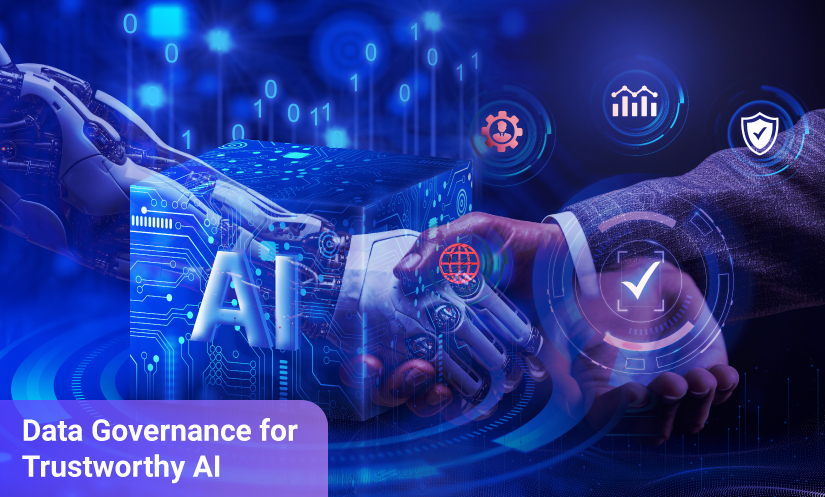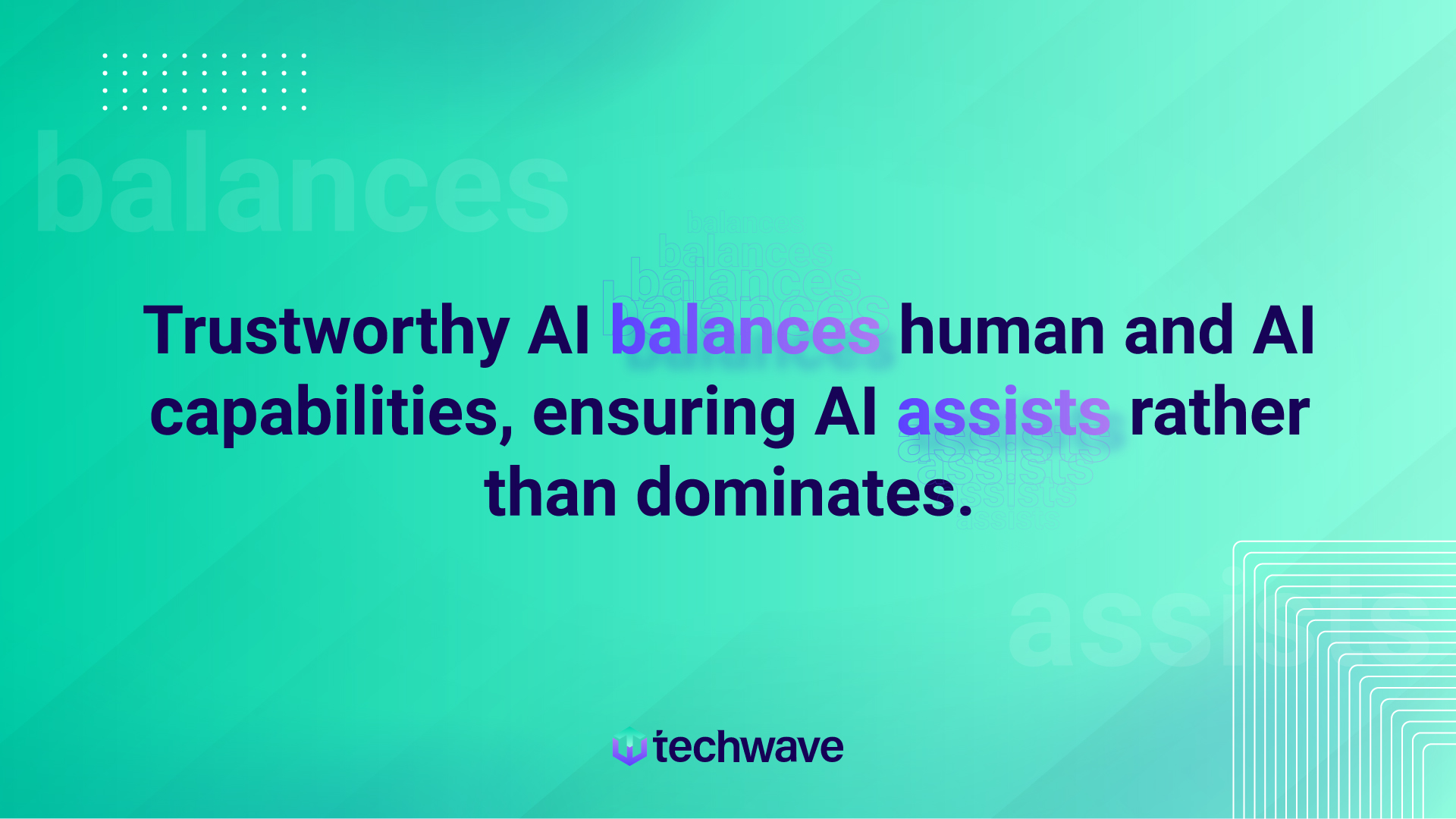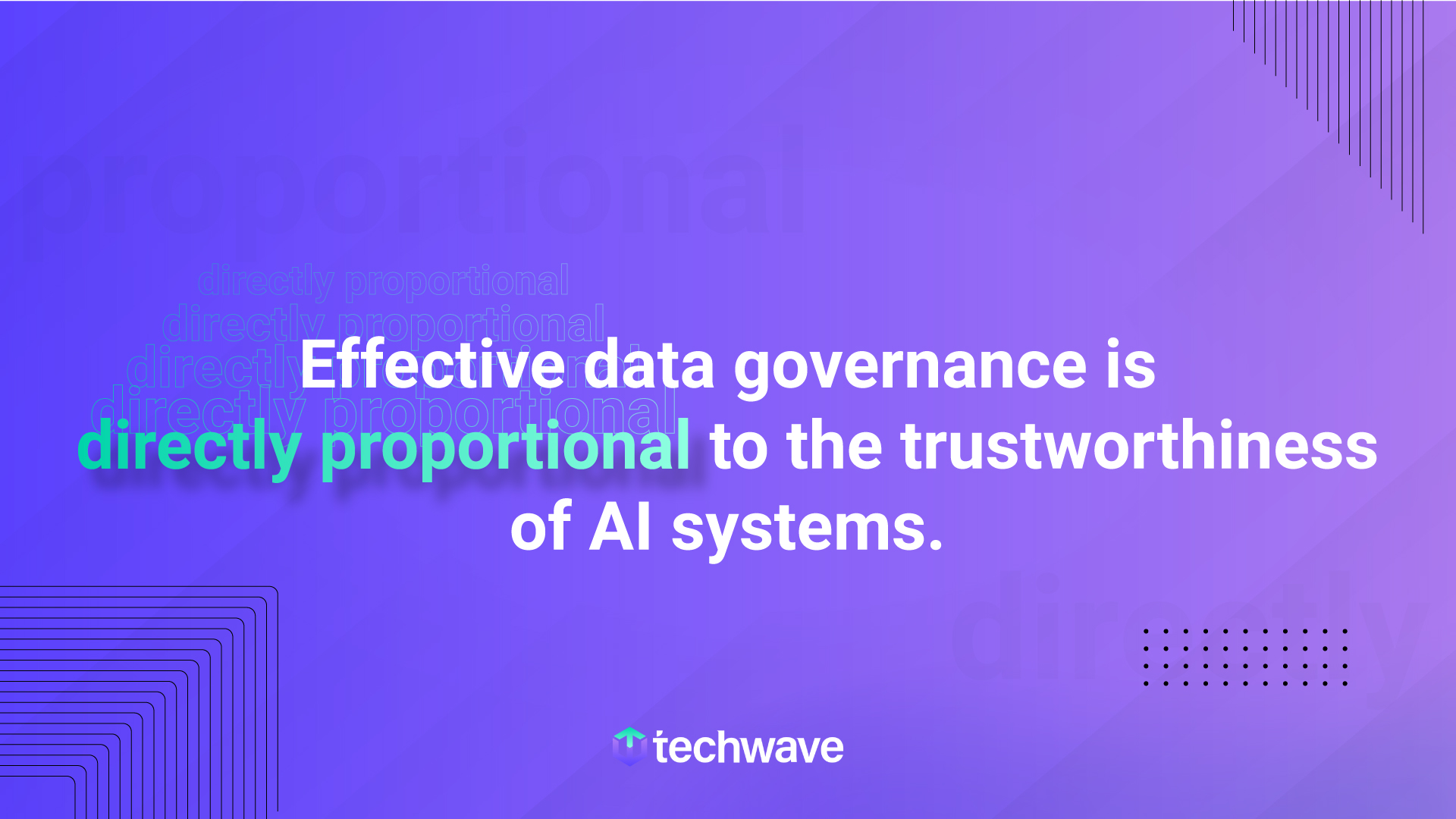
The synergy between data, analytics, and AI fuels transformative changes, reshaping revenue streams and redefining business management. Fierce competition persists as companies develop a clear roadmap to make their enterprise data and tech-driven.
A Quick Glimpse into a Data-obsessed Era
According to McKinsey , by 2025, global companies will generate approximately 463 exabytes of data daily.
Organizations enthusiastically adopt cloud strategies, motivated by the pursuit of cost-efficiency, scalability, and agility. With businesses progressively moving to the cloud, an overwhelming amount of data is being generated at unprecedented rates. Whether it involves customer interactions, IoT devices, or supply chain data, the cloud is a vast reservoir for this surge.
So, in this data-obsessed era, whether individual teams cobble together the required data and technologies or centralized teams extract, clean, and aggregate data, managers face numerous challenges, though not necessarily identical. These include:
- Handling diverse data sources and breaking down silos
- Maintaining the quality of data and machine learning models
- Facilitating trusted data discovery and ensuring secure data access
- Navigating regulatory landscapes
While companies are still grappling with cloud and big data security concerns, integrating AI into data analytics has saddled businesses with an increased risk of data misuse. Let’s see how AI has further complicated the existing challenges.
The Incursion of AI into Data Analytics
The intricate web of companies, customers, employees, and partners in the business ecosystem interconnects in numerous ways. Businesses rely on data and AI to navigate this delicate and valuable ecosystem.
McKinsey report highlights its vast potential, estimating that by 2030, analytics and AI could bring in over $15 trillion in new business value.
AI comprises subfields like machine learning, where algorithms improve accuracy without explicit programming, and natural language processing (NLP) for human-language interaction.
For example, platform companies like Amazon are restructuring the value chain by employing AI tools to streamline logistics, significantly altering market exchange. Amazon expedites deliveries by reducing the distance between its products and customers. This effort, known as “regionalization,” involves shipping products from warehouses closest to customers rather than distant locations across the country.
However, this process relies on technology capable of analyzing data and patterns to forecast product demand and locations. This is where AI plays a crucial role. By positioning products closer to customers, Amazon can achieve same-day or next-day deliveries, similar to its Prime subscription service!
All the same, AI’s transformative power for enterprises comes with a growing need for sophisticated security protocols to protect against data breaches and their far-reaching consequences. Generative AI epitomizes this challenge.
Generative AI – A Renaissance in AI
The enterprise adoption of generative artificial intelligence (AI) is in its early stages but is anticipated to accelerate rapidly as organizations discover new applications for the technology.
GenAI uses ML to create data resembling its training set, producing text and images similar to human creations. It employs machines to create human-like content and handles diverse tasks like coding, troubleshooting, and automation. OpenAI’s GPT-4 is a notable example, excelling in generating human-like text.
However, amid the AI rush, a critical element often neglected is – AI data governance.
As generative AI (discussed in detail in our next blog) continues to reshape data generation, analysis, and decision-making processes, it raises critical questions such as:
- Can data center infrastructures cope with the growing workload generated by generative AI?
- How do businesses handle the data? How do you guarantee its quality?
- What about authenticity, privacy, and ethical considerations of generated data?
- As organizations construct and implement applications integrating genAI, how will this impact the demand for computing power and other resources?
Trustworthy AI and its effective governance is the answer to these challenges.
What is Trustworthy AI?

Trustworthy Artificial Intelligence refers to an AI system meticulously crafted and implemented with a human-centered approach in partnership with stakeholders such as experts in ethics, technologists, policymakers, end-users, and affected communities. These systems integrate adequate accountability, inclusivity, transparency, completeness, and robustness to enhance human control and avoid harm. Trustworthy AI aims to guarantee safety, dependability, and ethical conduct. It is based on five principles (check our next blog).
- Fair and unbiased
- Transparent and reliable
- Responsibility and accountability
- Privacy
- Safety and security
So, the question is – if you have invested in maintaining trustworthy AI, what is the role of data governance?
The notion that where there is data, there’s scope for errors, inconsistencies, and security risks cannot be ignored, even with AI in the picture. If you consider the healthcare space, AI has made revolutionary advances. However, given the sensitive nature of this field and its ramifications when integrated with AI, ensuring trustworthiness in the outcome becomes critical for the end users.
Research by the University of Cambridge and Simon Fraser University on medical image reconstruction algorithms based on AI and deep learning reported in the Proceedings of the National Academy of Sciences that relying on AI-based image reconstruction techniques to diagnose and determine treatment could harm patients.
AI isn’t inherently flawed, but because AI algorithms learn to recreate images using past data, even slight modifications in the input data can cause significant changes in the output images. This highlights the importance of healthcare departments maintaining top-notch data governance. Robust data governance ensures that only precise input data gets incorporated into AI systems. When AI produces accurate outputs, it gains trustworthiness.

McKinsey’s Global Survey on AI underscores that organizations achieving the highest returns from AI have comprehensive governance frameworks encompassing every model development stage. It is further attested by Forrester’s 2023 AI predictions, projecting that one out of every four tech executives will have to provide reports on AI governance to their respective boards.
Hence, AI governance is now being discussed at the board level alongside cybersecurity and compliance, as it is also the foundation of most digital transformation efforts. It involves overseeing, managing, and supervising the AI operations within an organization.
Effective Data Governance Best Practices for Ensuring Trustworthy AI
Meeting the demands of data governance in a world heavily influenced by AI necessitates a tailored framework explicitly designed for this purpose. To accommodate the distinctive features of AI, ML, and automation and ensure trustworthy AI, a contemporary data governance framework must consider the following best practices.

Enhance algorithmic processes
Algorithms must generate traceable records illustrating the key underlying variables, their selection process, and the respective weights assigned to each.
Enhanced clarity and traceability of data and algorithmic processes will facilitate a more thorough examination and validation of outcomes, reducing the risk of misuse or unintended consequences.
Here’s an example:
Spotify creates personalized playlists instead of suggesting individual songs. This concept birthed Discover Weekly, swiftly gaining popularity. Over 40 million users engaged within a year, streaming nearly five billion tracks.
Discover Weekly used Spotify’s recommendation algorithm to boost user music preferences and offer insights to artists and labels. This strengthened Spotify’s position in negotiations with music publishers. Yet, this achievement hinged on Spotify assuring users of responsible listening data use, which is crucial in Europe’s privacy landscape. This approach enabled Spotify to implement privacy-centric recommendation systems, respecting users’ data privacy.
For a bit of background, data governance facilitated the inception of Spotify, as it addressed music piracy that severely impacted the industry. Spotify’s ability to demonstrate trustworthy data handling made it a viable music service. The success of Discover Weekly exemplifies the impact of well-governed data in creating a beloved brand and shifting the dynamics of an entire industry.
Engage the right people
The continuously changing data environment demands expanding current data and governance teams to encompass a broader range of skills. A well-balanced mix could consist of:
- Subject matter experts
- Data analysts
- Data scientists
- Legal counsel
The insights from each of these experts are critical. For example, despite being the primary data users, data scientists are seldom engaged in initial data strategy talks, if at all. This situation requires a shift because:
- They possess profound insights into the potential applications of data and can offer ideas to enhance its gathering, storage, and arrangement.
- Regularly, they derive practical business variables and valuable insights from raw data, often forming validated intellectual property that can confer a competitive edge.
- Their expertise extends to creating intelligent, AI-powered data quality checkpoints like automated validation algorithms, anomaly detection models, and ML-based data cleansing tools, which can significantly enhance and fortify data governance procedures.
Employ compliance, fairness, and system governance teams
Automated systems cannot entirely substitute for human expertise and insight. Some level of manual oversight might be essential to guarantee the impartiality and reliability of AI systems. This manual review is an initial defense against possible discrimination and bias in AI systems.
Businesses can establish compliance, fairness, and system governance teams to assess input variables. Collaborating with an in-house tech team and providing education and training can promote ethical AI operations.
This entails establishing guidelines for storing and transmitting data and ensuring compliance with regulations like the European Union’s General Data Protection Regulation (EU GDPR) and the California Consumer Privacy Act (CCPA).
Industries, especially heavily regulated ones like financial institutions, must remain vigilant about regulatory changes. Failing to do so could result in fines, penalties, and damage to their reputation. If there is a lack of in-house expertise, it is best to partner with an expert third-party AI data governance solutions provider.
Data quality should be a top priority
If the data used for training AI is flawed or biased, it can lead to inaccurate outputs and poor decisions. Strict measures ensuring data accuracy, completeness, consistency, and fairness are essential at every stage of data handling.
Data governance must include initiatives for improving data quality and implementing master data management (MDM). For instance, companies can employ data fabric strategies, automating data discovery and governance. A data fabric addresses four key objectives:
- Intelligent data integration
- Enabling broader access to data
- Reinforcing data security
- Facilitating governance for trustworthy data use
Also, it’s about maintaining high standards for data products. This includes implementing practices like code review, testing, and continuous integration/continuous development (CI/CD) to ensure reliability and trustworthiness in the insights provided by AI data products like predictive maintenance platforms, recommendation engines, virtual assistants, NLP applications, etc., which are essential for widespread adoption and use within a business.
Balance governance with innovation
Governance shouldn’t stifle creativity; it should fuel it. Teams must distinguish between experimental phases, self-service projects, and final products, each needing specific oversight. While exploration is crucial, it’s essential to invest resources and testing into ideas that show potential for becoming successful operational solutions.
Encourage transparency
As a business grows, it gathers data from diverse sources, sometimes outside IT’s control. Departments may isolate data for confidentiality reasons. Without complete visibility into data sources, IT cannot enforce governance. This is vital in trustworthy AI, where accurate decisions rely on transparent, high-quality data.
- Ensure visibility and traceability in all processes to facilitate thorough review and minimize unintended outcomes.
- Build a robust data pipeline that stores original data, manages consumption, and supplies ML algorithms. The effectiveness of AI hinges on these pipelines providing relevant data to algorithms.
- Implement robust filtering systems for incoming data into the pipeline.
- Develop audit trails to ensure the algorithms foster transparency, accuracy, and accountability.
Consider Ethics in AI Governance
Traditional data governance focuses on technical integrity, but ethical considerations become critical with AI. As algorithms replace human judgment, AI governance adds a moral dimension, ensuring fair, reliable, and responsible outcomes.
A universal “ethical data governance” standard does not yet exist. However, governance should ensure that AI algorithms:
- Treat everyone fairly
- Ensure safety for the workforce, customers, and partners
- Respect user privacy and secure data
- Establish accountability for system decisions
Adopt top-tier cybersecurity measures
Enforce strong network security measures like firewalls and virtual private networks (VPNs) and consistently monitor network activity. Perform third-party security evaluations and penetration tests to pinpoint and resolve vulnerabilities. Regularly test your defense capabilities for efficient data management and compliance with data governance policies.
Align your AI strategy with data governance goals
Organizations must harmonize their AI integration with the overall data governance strategy to comply with data governance rules effectively. Align AI applications with specific data governance goals, such as data quality, privacy, and security objectives, ensuring optimal performance and adherence to regulations.
Leverage data governance tools
Some popular data governance tools include Informatica Axon, IBM InfoSphere Information Governance Catalog, and SAP Master Data Governance.
Optimize Your AI Models with Techwave’s Advanced Data Governance and AI Expertise
Devoting time and resources to establish a comprehensive data governance strategy is crucial for training AI models with top-notch data and enhancing algorithm precision. Techwave offers data governance services that support better decision-making by clearly understanding the organization’s data assets. Techwave’s expertise in AI capabilities such as machine learning and data analysis, NLP, Text Analytics, and Image Analytics will help your business drive forward. Our partnership with prestigious technology brands like IBM, Informatica, and SAP makes us the perfect choice for futuristic Data & Analytics solutions spanning data governance, engineering, integration, modernization, visualization, and predictive analytics.
Contact us for further details.
